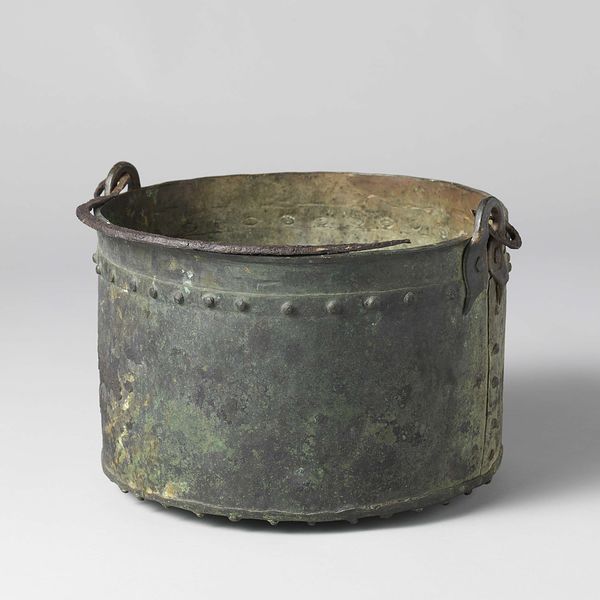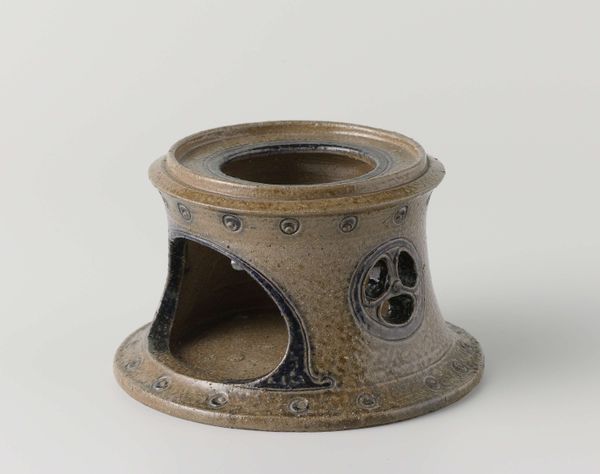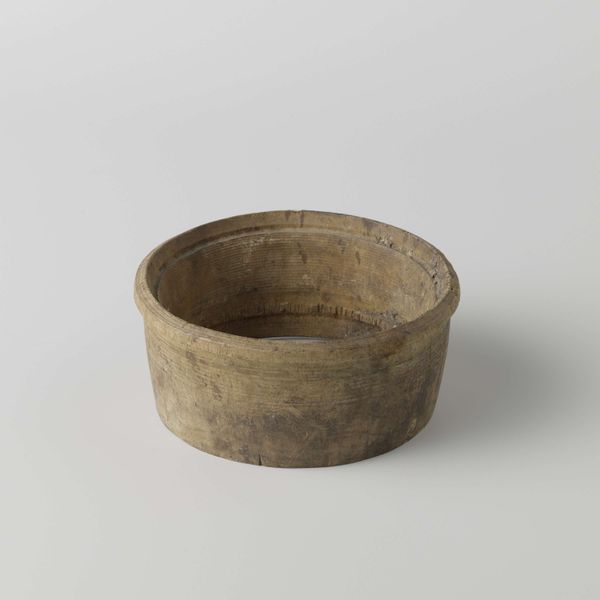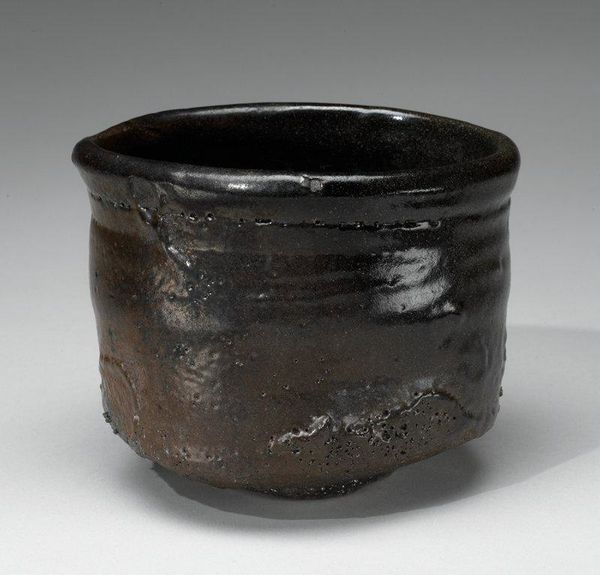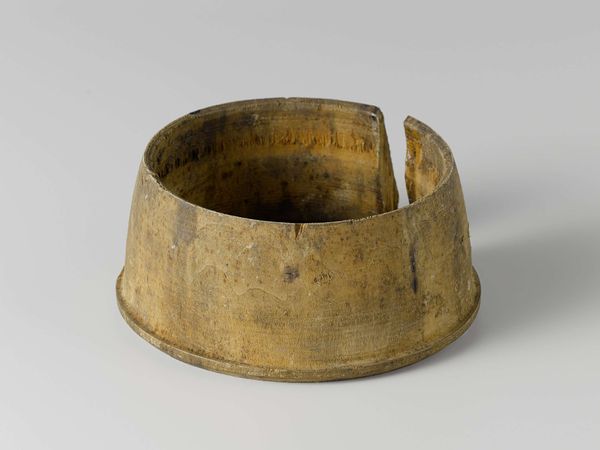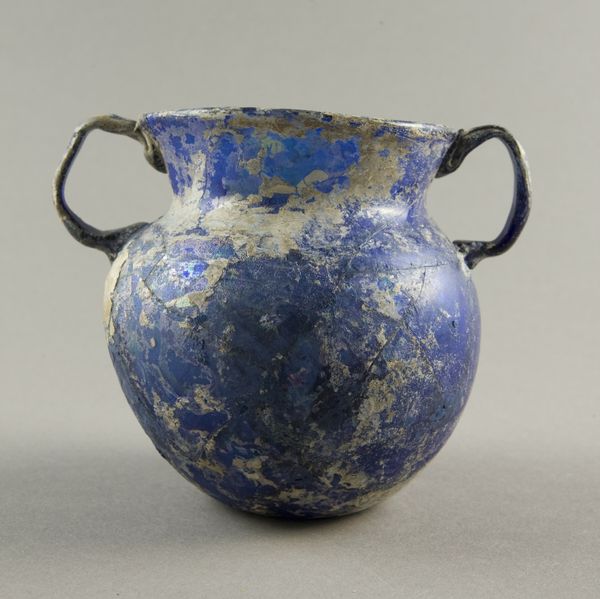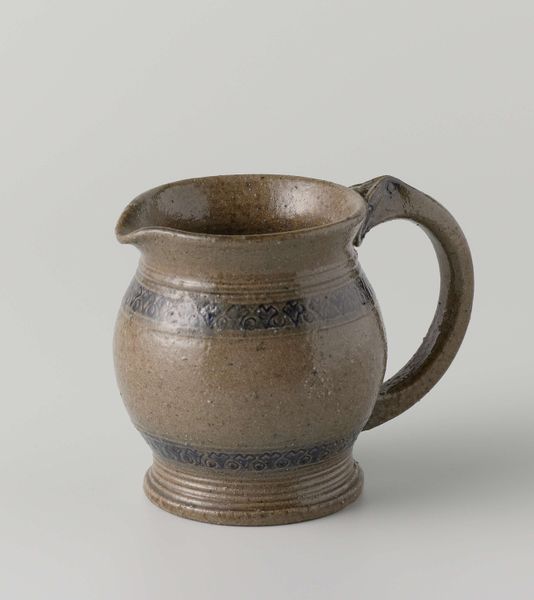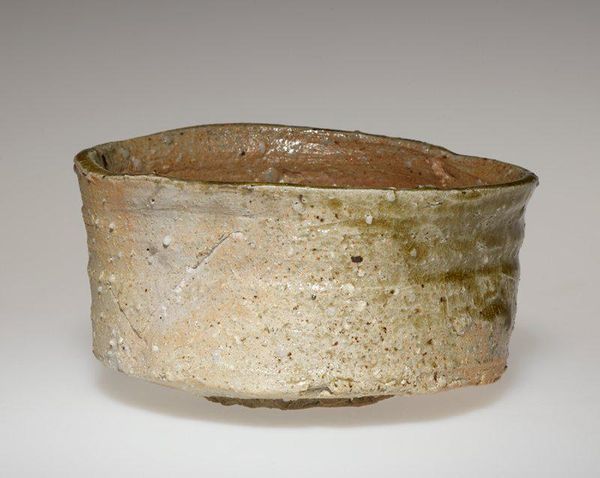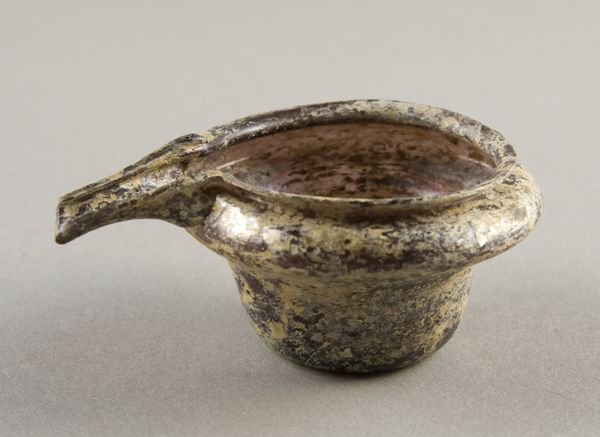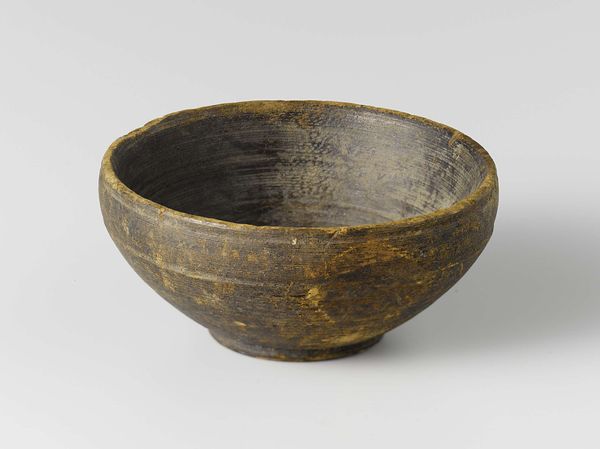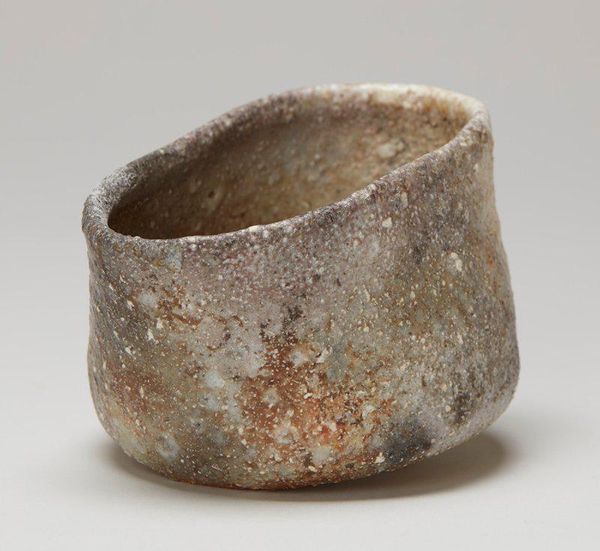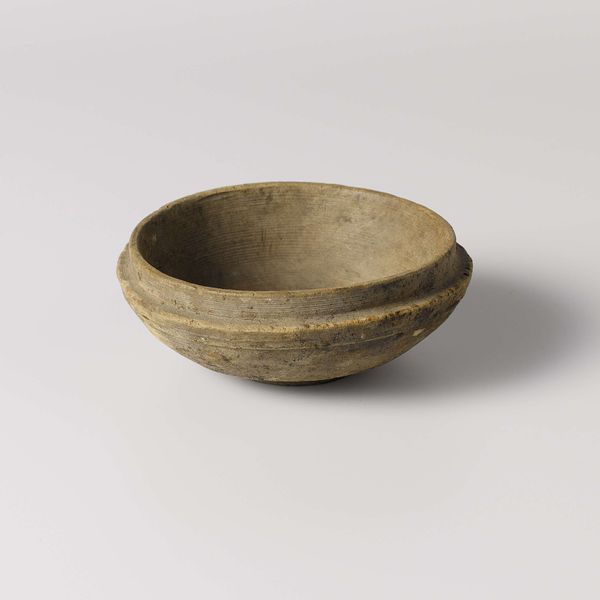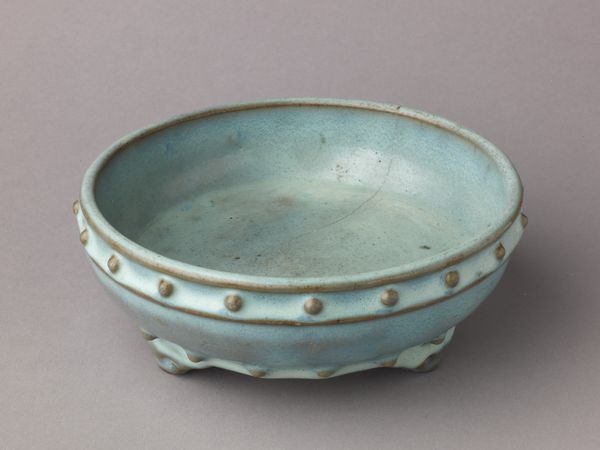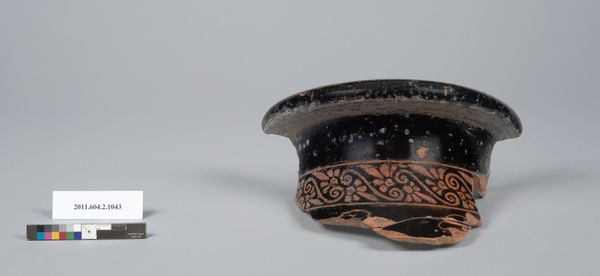
ceramic, earthenware
#
art-nouveau
#
ceramic
#
earthenware
#
stoneware
Dimensions: height 2.5 cm, width 7 cm, depth 4.9 cm
Copyright: Rijks Museum: Open Domain
Curator: Here we have an earthenware sugar pot with a salt glaze, created in 1901 by Joseph Mendes da Costa. Editor: It's a lovely little cylinder! And…sturdy. It looks like it could survive an earthquake, maybe a small war. Does that salt glaze have something to do with that look? Curator: Exactly. Salt glazing involves introducing salt into the kiln during firing; the sodium vapor reacts with silica in the clay, creating a durable, glassy coating. Its common use was for preserving and transporting things. Editor: A functional glaze for a functional, if lovely, little container. I’m imagining this little pot on some old wooden table, next to other pieces of rustic earthenware, everything covered with just a bit of dust and light. Is it art nouveau style, did you say? That would have been during the peak of this rustic and almost craft-y, anti-industrial aesthetic... Curator: Yes, that's a really important insight! Mendes da Costa was deeply involved in that reaction, wasn’t he? Art Nouveau pieces, while beautiful in themselves, very often carried within them that explicit intention to go against the cheap output and exploitative labour of industry. His choice of a somewhat coarse, honest material like earthenware over porcelain speaks volumes, as does the rather robust, unpretentious design. Editor: Almost aggressive. I mean it seems designed for use. Imagine a small cafe in the Netherlands at the turn of the century; each morning, you pick it up, dust it, and take it to a wooden table to add flavor and nourishment to the rituals that make life endurable, if not joyous... It certainly looks as if it has stored, given and received flavor from time itself. Curator: It brings attention back to labour, doesn't it? The labor to get clay and prepare the piece, glaze and fire it, pack the sugars. Mendes da Costa trained in architecture, he understood function. The choice of earthenware over refined porcelain connects it to the earth, to local materials and a rejection of mass production. Editor: Absolutely. It really captures a moment of change; like an act of resisting new production methods, one pot at a time. You could look at it for days, really. Curator: Agreed. Thanks to pieces like this, we have material objects, in both senses, that reveal a powerful pushback at a certain point in time against prevailing systems.
Comments
No comments
Be the first to comment and join the conversation on the ultimate creative platform.
